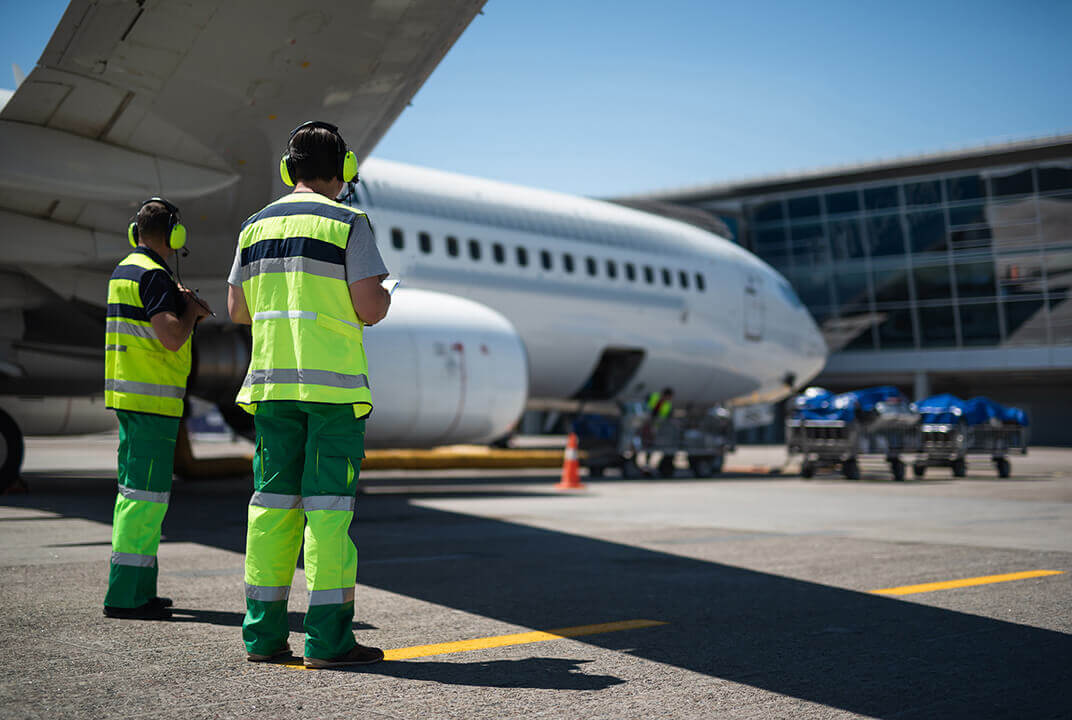Insight | How big data drives safety
Select Language
How big data drives safety
How SB-S brings the speed and benefits of broadband to the flight deck.
Airline passengers would be surprised to hear that some cutting-edge technology reached the cabin long before it appeared in the cockpit. In fact, at the moment, cockpit technology is caught in a bit of time warp. “Pilots are still using narrowband, but passenger broadband has been operational for a number of years,” explains Inmarsat’s VP of Safety and Operational Services, Captain Mary McMillan. So while passengers are using social media and shopping online, pilots still use a system that only transmits small amounts of data when a conversation is taking place with air traffic control or airline operations.
There are very good reasons for this speed variance between the two domains. Email or web surfing outages are merely inconvenient, but if an airplane loses communication with air traffic management services on the ground, the consequences could be significant. Since flight deck communications must be highly reliable and secure, we transmit them over separate, lower frequencies that are not as susceptible to service interruptions caused by bad weather or vulnerable to security risks. We have created a virtual “data fortress door,” ensuring that cabin connections are segregated from those of the cockpit, while also ensuring the highest levels of encryption and information security for safety-critical communications.
Despite the flight deck’s history of having slower communications, today Inmarsat is enhancing throughput capacity for the flight deck by many orders of magnitude. This is where our new communications platform – SB-S (SwiftBroadband-Safety) comes in.
Related service
Powerful and versatile
SB-S is the first and only global, secure, IP connection for operations and safety communications, delivering incomparable amounts of protected data everywhere airlines fly. Always on and always secure, SB-S is a strategic asset that unlocks a new world of digital transformation, delivering game-changing visibility into global airline operations.
SB-S sets the benchmark for aviation communications. More secure than cabin communications and operating over the ultra-reliable L-band, SB-S provides rich data to the flight crew in real time. Some of its powerful capabilities include global flight tracking, an IP connection to power Electronic Flight Bag (EFB) applications for improved operational efficiency, and flight data streaming to deliver the Black Box In The Cloud™ concept.
Most planes flying oceanic routes currently use Inmarsat’s Classic Aero, our market-leading voice and data safety service that offers surveillance and communications. The system is used by more than 200 major airlines, jet operators and government agencies and is installed on 90% of oceanic wide-body aircraft. When Inmarsat began offering Classic Aero in 1990, we made it possible to reduce the separation requirements between aircraft in the sky, expanding oceanic airspace capacity by over 300% and savings airlines millions over the following decades.
For pilots, SB-S is as transformative as Classic Aero. Hawaiian Airlines began flying with SB-S in 2015 and the feedback has been overwhelmingly positive. Pilots report that the satellite Voice over IP feature is a key benefit, as it allows them to talk to air traffic controllers with the call quality of a landline or mobile phone. However, this is just the tip of the iceberg: SB-S delivers a broad range of benefits in areas as varied as fuel efficiency, better asset utilisation, increased capacity and enhanced safety.
In terms of voice communications, SB-S enables two members of the flight crew to speak to the ground at once. This has no effect on the transmission of other IP-based data coming in and out of the cockpit. Data transmission for other IP-based applications will be greatly enhanced too, with speeds many orders of magnitude faster than Classic Aero.
All the data, all the time
SB-S brings a high speed connection to the EFB. Over the last five years, tablet computers have largely replaced the bulky flight bags that used to contain paper charts (and weighed up to 40lbs). But pilots still have to load the tablets before they leave and, if there is no broadband on the plane, the information, like weather data, can quickly become obsolete.
SB-S means that the EFB can be updated continuously. As a result, planes can change their courses to avoid bad weather as it happens and pilots can adjust altitude to improve fuel efficiency. For passengers this will mean a smoother, faster flight and, for the airlines, it could mean reduced fuel burn and greater customer satisfaction.
Better data works both ways. With SB-S, aircraft health and performance data is sent to the ground in real-time, which makes predictive maintenance easier and turn-arounds faster. It also allows more regular and faster aircraft position reporting, allowing a greater number of planes to fly in the same airspace. IATA has forecast that passenger numbers will rise from 3.3 billion a year (in 2014) to 7.3 billion by 2034, so this is a key consideration.
Better position reporting also means that, should the very worst happen, disappearance is far less likely and the search area for a missing plane could be dramatically reduced. SB-S will allow the streaming of real-time data from the aircraft to the airline, should the plane go into distress mode – a service described as Black Box In The Cloud. It’s an innovative approach that will prove invaluable to accident investigators if the physical black box is not recovered. SB-S means never losing data intelligence.
It’s not just the obvious things either. SB-S could also bring medical emergency applications to perform remote diagnoses which on-the-ground experts could then advise on. Is a patient’s condition sufficiently serious to merit an emergency landing – and what needs to be done to treat their condition while the plane is still in the air?
Like Classic Aero before it, SB-S is the industry gold standard. With global coverage and 99.9% reliability, it’s the best on the market. Inmarsat owns and operates its total network of satellites and ground stations which means we are not reliant on other operators, and our services are designed for inflight connectivity from the ground up. We’ve also designed SB-S to power future ATM modernisation programmes like SESAR, Iris, and NextGen. Unlike other offerings, it exceeds all international safety standards and Inmarsat is an integral part of regional and global initiatives to define future safety standards and concepts.


